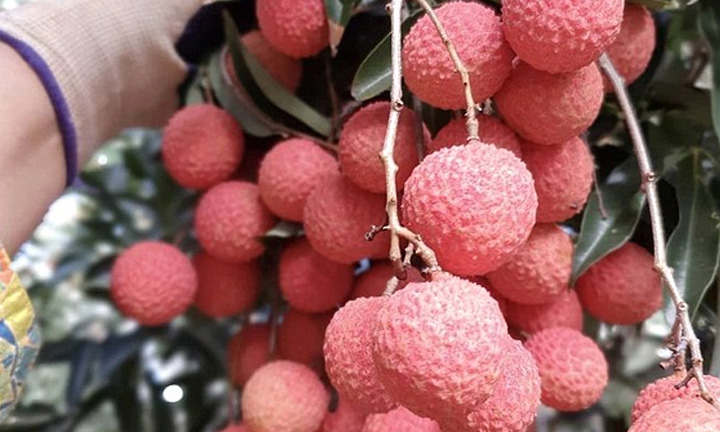SOURCE: Jill Houser, Freshplaza
Australian lychee growers were fortunate the season had just finished before the widespread rain and flooding that impacted Queensland and New South Wales, meaning that while properties were affected, all the fruit had been picked for the year.
In late February and early March, heavy rain and flooding events impacted growers from Bundaberg down to Northern New South Wales, and Australian Lychee Growers Association (ALGA) Executive Officer, Jill Houser says growing areas on the Sunshine Coast, north of Brisbane, experienced major flooding and erosion from the intense weather system that persisted for days.
“The erosion damage affected property roads, dams and paddocks which will result in many months of expensive repairs and clean-ups for growers in this area,” she said. “Also, during the floods, growers in the SE Queensland areas of Beerwah and Landsborough were also hit by severe hail storms which did major damage to their houses, sheds, orchards and netting structures. The harvest season had only just finished and most growers would have completed or nearly completed their pruning before the rain event, luckily there was no supply issue during this time.”
Overall, production-wise Ms Houser explained that the season commenced in Northern Queensland in late October-early November, with an extremely low volume of supply, but the volume did pick up from Central Queensland, Bundaberg and the Sunshine Coast growing areas.
“The figures are not available yet, but it is estimated that the annual tonnage should be similar to previous years,” Ms Houser said. “North Queensland has experienced lower than normal tonnage for the past three years – all a result of weather conditions during flowering and fruit set. The low tonnage did result in exceptionally high returns for all growers with the price to grower remaining high even as the season extended further down the Queensland coast. There were small fluctuations after Christmas and then again after Chinese New Year but overall, it was a good price year and good to see growers receiving well-deserved returns for their lychee. Growing areas from Central to South East Queensland produce higher tonnages of lychee enabling both the domestic markets and current export markets, protocol and non-protocol destinations, to be well maintained with no oversupply on the domestic market which helped keep prices buoyant.”
Ms Houser also runs a lychee farm at Mooloolah on Queensland’s Sunshine Coast, and she says that the season was not without its challenges. The ALGA notes that for the two years since the outbreak of the COVID-19 pandemic, the industry has been affected by the lack of available staff to harvest and pack lychees.
“There has been a very short supply of backpackers and international holidaymakers touring Australia,” she said. “Those who are available do have the choice of a variety of positions and are looking for jobs other than in horticulture.
“All growers just made the best of the situation obtaining their staff from various outlets e.g. Harvest Trail, Gumtree, JobActive and backpacker sites, also the incentives offered by the Australian Government to relocate and pick fruit did prove to be of assistance to many Australian workers who were willing to travel to find work. International borders are now opening and backpackers are on the move again so hopefully, COVID-19 work issues will be a thing of the past although there may still be a need for the government to do more to entice backpackers back to the horticultural industry.”
The pandemic also had an impact on the high cost of export freight, but the IFAM assistance has ensured that all export market requirements were met. Hong Kong has always been one of the biggest markets for Australian lychee with fruit moving into China. Although, she says since 2019 this market has slowed down considerably and now exports to North America have overtaken this market with the US now the biggest single port of destination.
“From a recent industry survey and the knowledge of additional plantings in many areas of Queensland, the industry is expecting production to increase significantly by 2028,” Ms Houser said. “Because of this, the industry has submitted Export Market Access applications for additional Asian countries e.g. Thailand, Vietnam, Taiwan and China. These applications were approved by the International Market Access Assessment Panel (IMAAP) and have now been sent through to the Dept of Agriculture (DAWE) for future negotiations, applications for both Thailand and Vietnam have moved into the country pool while Taiwan and China moved into a strategic pool. The difference between country and strategic pool is currently Thailand and Vietnam accept the irradiation protocol which the lychee industry believes is the most efficient and fruit friendly treatment available, whereas China and Taiwan have not embraced this import protocol as yet.”
The ALGA also focused on a marketing campaign in 2021-2022, aimed to drive general awareness and encourage consumers to enjoy lychees during peak season.
“Both digital and social media channels were active during the 6-month season period and the campaign focussed on informing and inspiring consumers to purchase and eat more Australian lychees,” Ms Houser said. “Hort Innovation, with input from the lychee industry, manages the lychee marketing campaign with results and outcomes from the season’s campaign available in April.”

